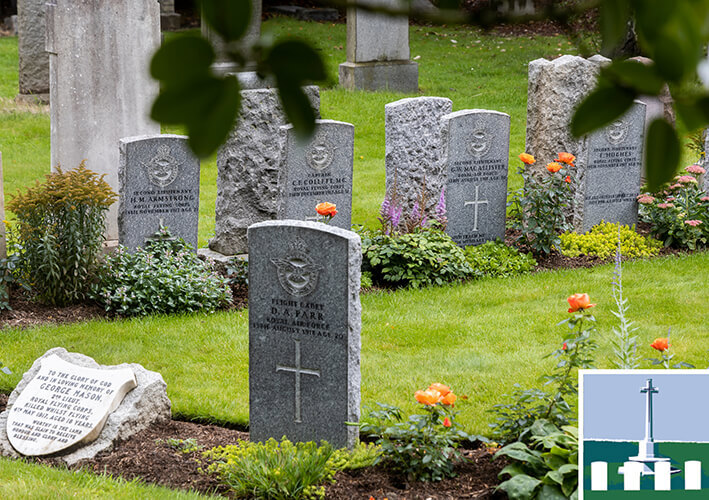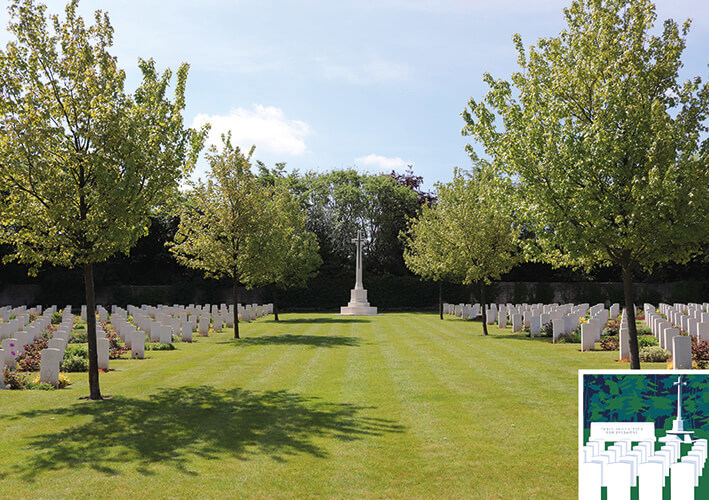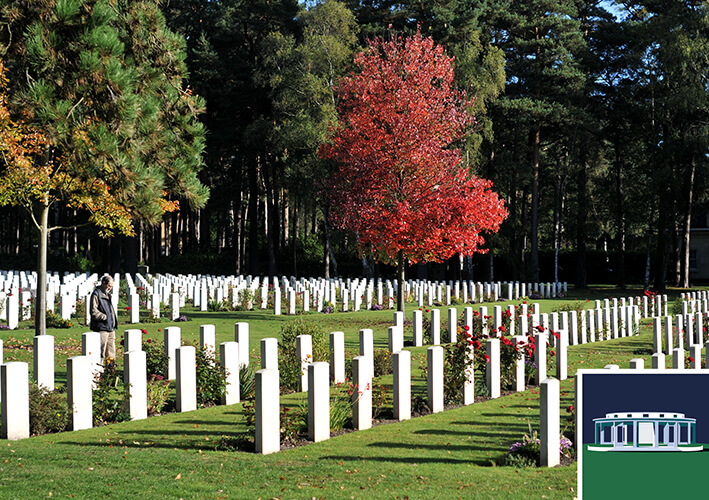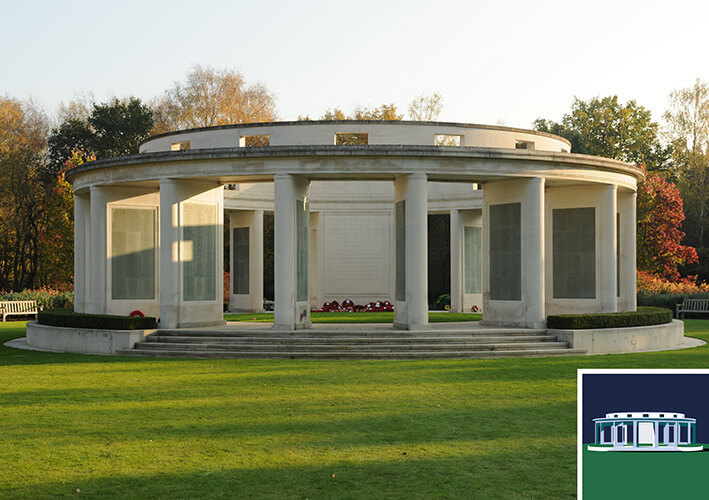28 May 2021
Four facts you didn’t know about our UK cemeteries
To the casual observer, one CWGC cemetery might look like any other. To a certain extent, this is intentional, with consistency in headstone and cemetery design creating the uniform rows of headstones standing in the gardens of tranquillity that are synonymous with our work.
Look deeper and suddenly each cemetery has its own stories, its own peculiarities and features that make it unique. Here are some little-known facts about four of our UK cemeteries, to inspire you to go and explore your local cemetery and see what you can discover.
Edinburgh Comely Bank Cemetery
Comely Bank Cemetery holds the sad distinction of containing the youngest CWGC casualty. Reginald Earnshaw, who lied about his age to join the Merchant Navy, died on 6 July 1941 aged only 14 years old. The personal inscription on Reginald’s headstone, as chosen by his mother Dorothy, reads: ‘REMEMBERED WITH PRIDE GREATER LOVE HATH NO MAN THAN THIS, THAT HE WOULD LAY DOWN HIS LIFE’.
The cemetery design is very different to cemeteries often associated with the Commission as it uses recumbent headstones in the main plot as well as the standing headstones visitors are more familiar with.
Harrogate Stonefall Cemetery
Before you look at a headstone in Harrogate Stonefall Cemetery, the architecture and horticulture in the cemetery should give you an idea of the stories of the men buried there.
Two thirds of the airmen buried in the cemetery are Canadian. As a result, it was decided that the horticultural treatment of the site would reflect this large Canadian presence by incorporating maple trees, donated by the Ontario Horticultural Association, into the planting schemes.
The air force association continues in the architecture of the site as the design of the cemetery includes an RAF shelter building. The shelter bears the words ‘PER ARDUA AD ASTRA’, the RAF motto, a Latin phrase meaning “through adversity to the stars”.
To the keen observer, even the stone the shelter is built from cements the site’s Yorkshire roots. It was designed by Sir Edward Maufe, himself a Yorkshireman, and is made from local stone. In correspondence, Maufe commented that his design “has the much-to-be-desired strength and str[a]ightforwardness of Yorkshire building”, and it’s clear that the local building style greatly influenced the final shelter construction.
Brookwood Military Cemetery
Brookwood Military Cemetery is the largest of our war cemeteries in the country. With over 5,600 Commonwealth casualties, it’s so large that it has two Stones of Remembrance and two Crosses of Sacrifice, one of each in the First and Second World War plots.
Alongside the Commonwealth casualties commemorated here, there is also plots for French, Czechoslovak, Italian, Belgian, Polish and American war dead. Chelsea Pensioners are also buried here.
Brookwood is also home to one of two American cemeteries, maintained by the American Battle Monuments Commission. Brookwood American Cemetery contains the graves of 468 American war dead, as well as a chapel with bears the names of 564 missing casualties.
Runnymede Air Forces Memorial
Many of the design features of Runnymede Air Forces Memorial reflect the men and women of the air forces, but none more so than its placement atop a hill in Runnymede. The height of the site, coupled with the wide-open views, link the memorial with the sky itself. This link is further accentuated by a constant stream of planes in the skies around Runnymede, coming and going from Heathrow Airport nearby.
Part of the memorial is formed by a tower, mimicking the air control towers seen at airfields around the country. In this tower is a chapel, whose windows open out onto spectacular views across Thames Valley. On the main window is engraved the words of the 139th Psalm, sometimes known as the Airman’s psalm:
If I climb up into Heaven, Thou art there;
If I go to Hell, Thou art there also.
If I take the wings of the morning
And remain in the uttermost parts of the sea,
Even there also shall Thy hand lead me;
And Thy right hand shall hold me.
These snippets are just an example of what can be seen during a visit to one of our sites. Whether its through design choices, planting schemes or the headstones of those buried there, there is always a story waiting to be told at a CWGC war cemetery.
Find your local cemetery through our new mobile app and download our research guides or activity book before you go.


















